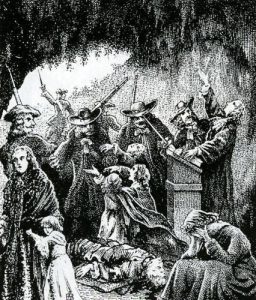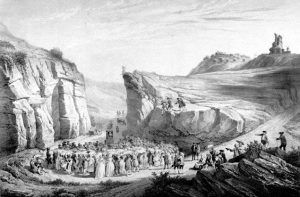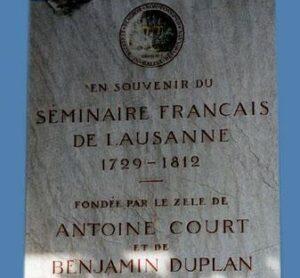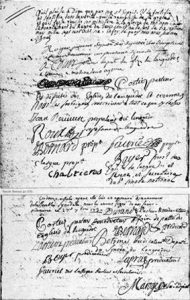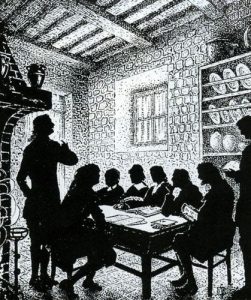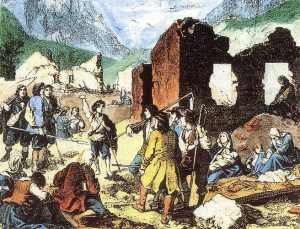The Churches of the Desert
The secret reconstruction of the church started in the Cevennes in 1715, in an area devastated by the war of the Camisards. The Protestants abandoned rebellion in favour of secret meetings, also called “Desert” meetings. These had to be peaceful, supervised by leaders (the elders) and led by preachers or pastors authorised to preach. This reorganisation of the Church spread little by little in the South, then in the West and North.
The Church under Louis XV saw alternate periods of calm and persecution. The situation varied according to region and the personality of the Intendant at their head. From 1743 the meetings were increasingly held in broad daylight, in full view of the people and the authorities. This plan, advocated by Antoine Court, aimed to show the King and Court that protestants still existed, but were not rebels. Despite the dangers they faced, pastors increasing in number.
Antoine Court was the major figure of this period. At the Montèzes synod (1715) he introduced a programme to re-build the Church. Supported by a small group of preachers and pastors, he extended the programme to neighbouring areas. Forced to flee to Switzerland, he founded the Lausanne Seminary to train future “Church of the Desert” pastors.
This period is known as the “heroic” period because those secretly practicing the Reformed religion knew they were risking very heavy punishments. The penalties for Protestants caught at a meeting were the following : the galleys for men and prison for women, the death penalty for preachers and pastors.

